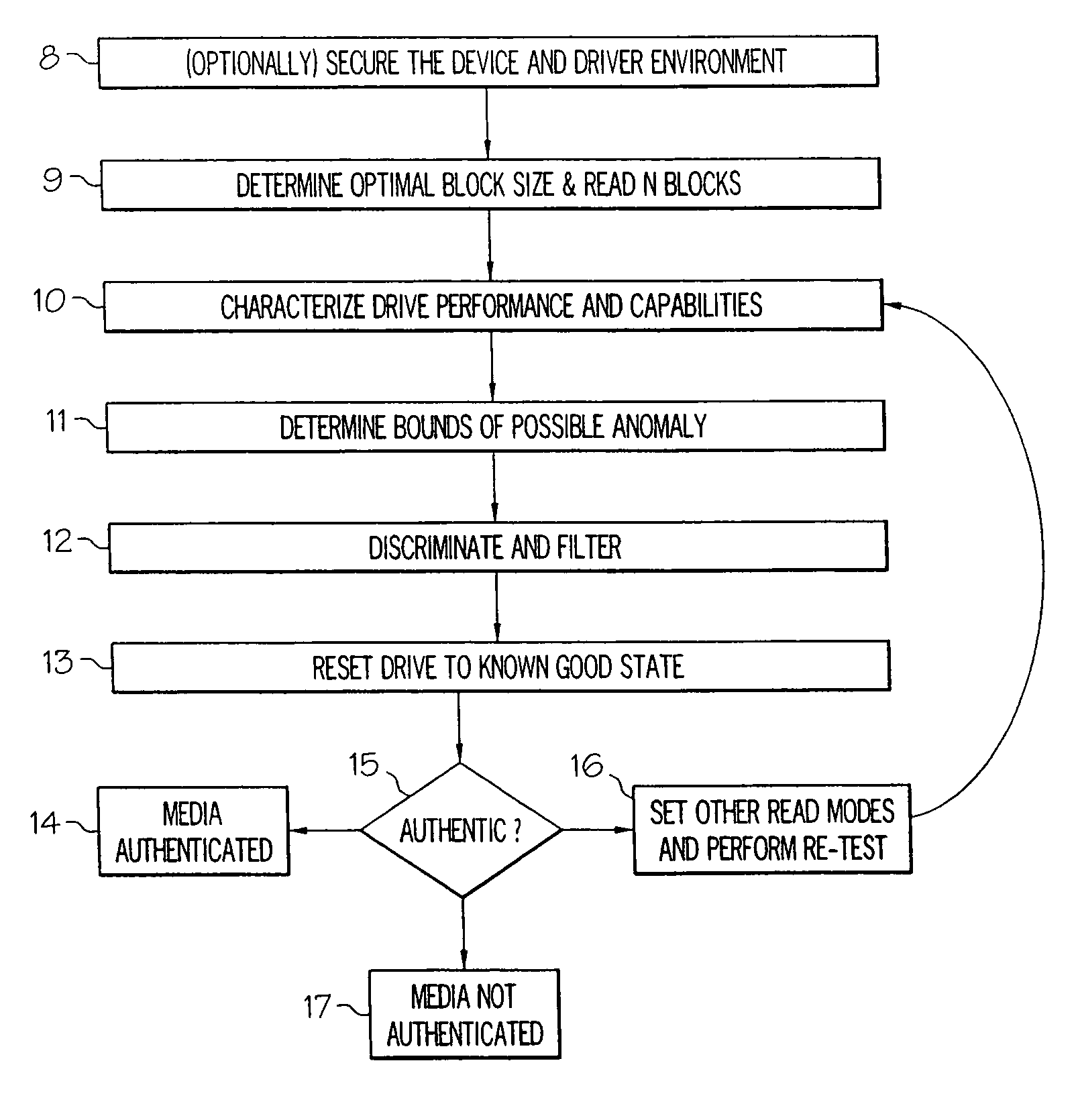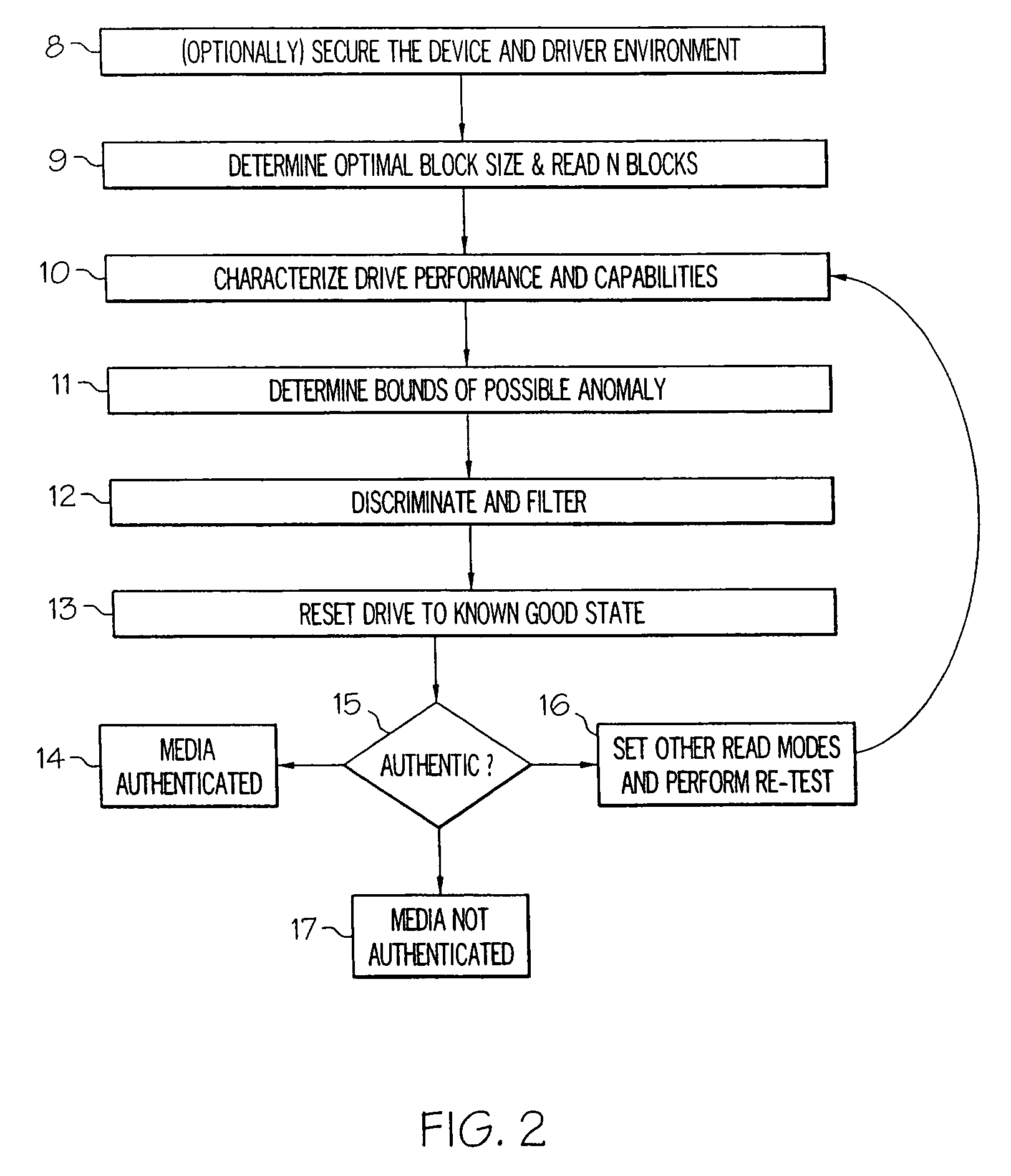Systems and methods for media authentication
a technology of media authentication and authentication methods, applied in the field of system and method for preventing, deterring and detecting the unauthorized duplication of digital information, can solve the problems of inability to accurately reproduce such marginally readable anomaly regions, inability to generate any recoverable, and absolute failure of the device to read, etc., to achieve accurate inferring the actual performance and status of the device.
- Summary
- Abstract
- Description
- Claims
- Application Information
AI Technical Summary
Benefits of technology
Problems solved by technology
Method used
Image
Examples
Embodiment Construction
[0043]The systems and methods of the present invention and various embodiments thereof may be implemented on any of a number of media reading device platforms, including, for example, a personal computer or general purpose digital computer 7 as shown in FIG. 1, including, but not limited to, single- or multiple-processor-based Windows™, Linux™ or Macintosh™ desktop computers such as those found with increasing frequency in contemporary homes and offices. Embodiments of the invention may optionally be implemented on firmware or a digital processing circuit, including, but not limited to, those found in CD and DVD consumer audio / video appliance components or systems, game consoles with optical media devices or optical media device support, in stationary and mobile applications. Embodiments of the invention may alternatively be deployed on other computing appliance devices such as hard-disk or random access memory based video and audio entertainment appliances which contain drives capa...
PUM
| Property | Measurement | Unit |
|---|---|---|
| magnetic | aaaaa | aaaaa |
| mechanical alteration | aaaaa | aaaaa |
| physical alteration | aaaaa | aaaaa |
Abstract
Description
Claims
Application Information
 Login to View More
Login to View More - R&D
- Intellectual Property
- Life Sciences
- Materials
- Tech Scout
- Unparalleled Data Quality
- Higher Quality Content
- 60% Fewer Hallucinations
Browse by: Latest US Patents, China's latest patents, Technical Efficacy Thesaurus, Application Domain, Technology Topic, Popular Technical Reports.
© 2025 PatSnap. All rights reserved.Legal|Privacy policy|Modern Slavery Act Transparency Statement|Sitemap|About US| Contact US: help@patsnap.com



